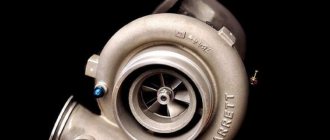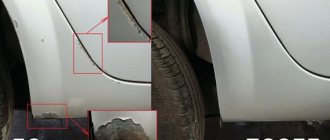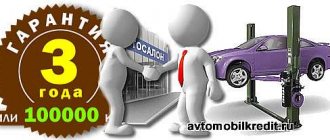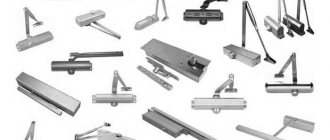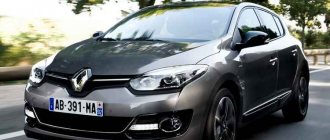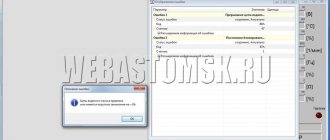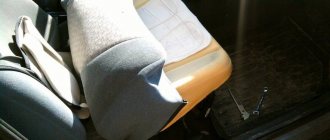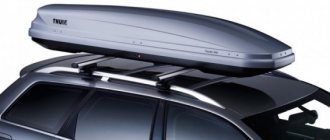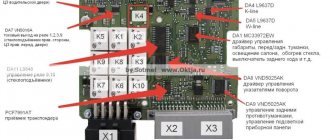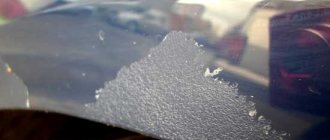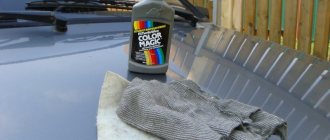Prices for body repairs
Body
| Checking body geometry | from 1800 rub. |
| Checking body control points | from 2000 rub. |
| Restoring body geometry | from 7500 rub. |
| Repair on the slipway | from 5200 rub. |
| Automatic repair | from 6700 rub. |
| Elimination of body distortion | from 3700 rub. |
| Changeling repair | from 18,000 rub. |
| Body disassembly | from 12800 rub. |
| Body painting | from 53,000 rub. |
| Polishing | from 7300 rub. |
Front bumper repair
| Removal and installation of the bumper with disassembly and subsequent adjustment | from 1100 rub. |
| Removal and installation of bumper tuning followed by adjustment | from 1800 rub. |
| Bumper repair with damage up to 30% | from 1100 rub. |
| Bumper repair with damage up to 50% | from 2100 rub. |
| Repairing a torn bumper | from 1300 rub. |
| Painting a new bumper | from 1500 rub. |
| Painting a used bumper | from 1800 rub. |
| Painting the bumper with a transition | from 750 rub. |
| Paintwork for bumper painting | from 1500 rub. |
Rear bumper repair
| Removal and installation of the bumper with disassembly and subsequent adjustment | from 1100 rub. |
| Removal and installation of bumper tuning followed by adjustment | from 1900 rub. |
| Bumper repair with damage up to 30% | from 1100 rub. |
| Bumper repair with damage up to 50% | from 2100 rub. |
| Repairing a torn bumper | from 1400 rub. |
| Painting a new bumper | from 1500 rub. |
| Painting a used bumper | from 1900 rub. |
| Painting the bumper with a transition | from 750 rub. |
| Paintwork for bumper painting | from 1800 rub. |
Front door
| Removal and installation of door with disassembly and adjustment | from 1500 rub. |
| Repair of doors with damage up to 30% | from 1500 rub. |
| Repairing a door with damage up to 50% | from 2600 rub. |
| Aluminum door repair* | from 2200 rub. |
| Painting a new door (both sides) | from 2200 rub. |
| Painting a used door | from 1800 rub. |
| Painting the door transition | from 750 rub. |
| LMB for painting the door | from 1800 rub. |
Rear door
| Removal and installation of door with disassembly and adjustment | from 1500 rub. |
| Repair of doors with damage up to 30% | from 1500 rub. |
| Repairing a door with damage up to 50% | from 2600 rub. |
| Aluminum door repair* | from 2200 rub. |
| Painting a new door (both sides) | from 2200 rub. |
| Painting a used door | from 1800 rub. |
| Painting the door transition | from 750 rub. |
| LMB for painting the door | from 1800 rub. |
Hood
| Removal and installation of hood with adjustment | from 700 rub. |
| Repair of hood with damage up to 30% | from 1300 rub. |
| Repair of hood with damage up to 50% | from 1800 rub. |
| Aluminum hood repair* | from 2600 rub. |
| Painting the new hood (both sides) | from 4100 rub. |
| Painting a used hood | from 7000 rub. |
| Painting the hood with a transition | from 1800 rub. |
| Paintwork for painting the hood | from 2200 rub. |
Replacing the front fender
| Removal, installation and adjustment of gaps | from 490 rub. |
| Front wing color | from 2230 rub. |
| Paint, primers, varnish and all consumables | from 1780 rub. |
Rear fender replacement
| Removal, installation and adjustment of gaps | from 490 rub. |
| Rear wing paint | from 2230 rub. |
| Paint, primers, varnish and all consumables | from 1780 rub. |
Tailgate repair
| Removing and installing the trunk door | from 700 rub. |
| Tailgate repair | from 750 rub. |
| Aluminum tailgate repair | from 1800 rub. |
| Repairing a torn tailgate | from 2100 rub. |
| Replacing the trunk door | from 2800 rub. |
| Painting a new tailgate | from 5000 rub. |
| Painting the trunk door with damage up to 30% | from 5000 rub. |
| Painting the trunk door with damage up to 50% | from 5000 rub. |
| Painting a used trunk door | from 5100 rub. |
Trunk lid repair
| Removal and installation of trunk lid with disassembly and adjustment | from 1100 rub. |
| Repair of trunk lid with damage up to 30% | from 1200 rub. |
| Repair of trunk lid with damage up to 50% | from 1700 rub. |
| Repair of aluminum trunk lid* | from 2600 rub. |
| Painting a new trunk lid (both sides) | from 1800 (1600) rub. |
| Painting a used trunk lid | from 1800 rub. |
| Painting the trunk lid with a transition | from 1100 rub. |
| LMB for painting the trunk lid | from 1700 rub. |
Roof repair
| Dismantling/assembling the roof | from 1800 rub. |
| Roof repair with damage up to 30% | from 2100 rub. |
| Roof repair with damage up to 50% | from 3300 rub. |
| Aluminum roof repair* | from 4800 rub. |
| Painting a new roof | from 4500 rub. |
| Painting the roof with a transition (possible if there is a hatch) | from 1800 rub. |
| Paintwork for roof painting | from 3300 rub. |
Frame repair
| Checking frame geometry | from 1300 rub. |
| Frame repair | from 16500 rub. |
| Frame restoration | from 21,000 rub. |
| Frame replacement | from 25,000 rub. |
| Painting frames with damage up to 30% | from 5000 rub. |
| Painting frames with damage up to 50% | from 5800 rub. |
| Used frame painting | from 6600 rub. |
Front spar
| Checking control points | from 970 rub. |
| Spar repair | from 3300 rub. |
| Repair of spar with damage up to 30% | from 5500 rub. |
| Repair of spar with damage up to 50% | from 6600 rub. |
| Restoring a torn spar | from 7000 rub. |
| Replacing the spar | from 9300 rub. |
| Painting of spar with damage up to 30% | from 1700 rub. |
| Painting of spar with damage up to 50% | from 1800 rub. |
| Used spar painting | from 1900 rub. |
Rear spar repair
| Checking control points | from 720 rub. |
| Spar repair | from 2500 rub. |
| Repair of spar with damage up to 30% | from 3700 rub. |
| Repair of spar with damage up to 50% | from 4800 rub. |
| Restoring a torn spar | from 5200 rub. |
| Replacing the spar | from 7000 rub. |
| Painting of spar with damage up to 30% | from 1200 rub. |
| Painting of spar with damage up to 50% | from 1300 rub. |
| Used spar painting | from 1500 rub. |
Threshold
| Removing and installing the threshold trim with subsequent adjustment | from 600 rub. |
| Installation/dismantling of a metal threshold | from 7500 rub. |
| Repair of metal threshold with damage up to 30% | from 1100 rub. |
| Repair of metal threshold with damage up to 50% | from 2100 rub. |
| Repairing a torn sill trim | from 1300 rub. |
| Aluminum threshold repair* | from 2600 rub. |
| Painting a new threshold (sill plate) | from 1300 rub. |
| Painting a used threshold (threshold overlay) | from 1500 rub. |
| Painting the threshold (threshold overlay) with a transition | from 750 rub. |
| LMB for painting the threshold | from 1100 rub. |
Radiator grille repair
| Removing and installing the grille | from 200 rub. |
| Grille repair | from 750 rub. |
| Painting the new grille | from 1500 rub. |
| Painting used grilles | from 1600 rub. |
Side mirror
| Removing and installing mirror | from 450 rub. |
| Mirror repair | from 600 rub. |
| Painting a new mirror | from 1500 rub. |
| Used mirror painting | from 1600 rub. |
Prices for additional body repairs
| Welding work of the exhaust system | from 300 - 1300 rub. |
| Argon welding | from 600 rub. |
| Replacing the back panel | from 4100 - 6700 rub. |
| Replacing the trunk floor | from 2800 - 5600 rub. |
| Replacing the front panel | from 4100 - 5600 rub. |
| Adjusting the door in the opening | from 700 rub. |
| Adjusting the front fender clearances | from 700 rub. |
| Front panel repair | from 3300 rub. |
| Window lift repair | from 1700 rub. |
| Repair of windshield pillars | from 3300 rub. |
| Replacement of front support cups (1 pc.) | from 1300 rub. |
| Opening a locked hood | from 1300 rub. |
Calculate the cost
What does a car look like after a body repair?
After restoration, the car is returned to the owner clean, intact, with factory paintwork. Craftsmen do not resort to replacing parts unnecessarily. If the item can be restored, they do everything possible to do so.
Using innovative equipment, you can recreate any element almost from scratch. Even if a factory part is 80% damaged, the master will reconstruct it. After restoration, the car is polished. Body repairs must be removed before and after. Photos are posted on the website. Every visitor to the site can see photos of car body repairs.
After the auto repair, the auto mechanic gives the owner time to inspect the car. The inspection time is not limited. If any deficiencies are found, he can immediately inform the service managers. Defects will be corrected free of charge. If the owner is satisfied with the quality of the car repairs performed, a bilateral acceptance certificate is signed. Photos are posted on the site only with the permission of the owner.
Car body repair without painting
If painting is necessary, repairs become much more complicated, which also affects its cost. If the dents are not accompanied by paintwork defects, then we eliminate them using special equipment that allows us to return the geometric configuration to its original state.
Body work without painting has clear advantages:
- the factory paint layer remains intact;
- the use of abrasive materials, putty and complex paint selection is not required;
- the cost of repairs is significantly reduced;
- The time required to carry out activities is significantly reduced - the procedure requires from 30 minutes (depending on the complexity).
The technology of car body repair without painting will be an excellent solution for eliminating damage that occurs as a result of falling and falling of various objects, careless actions when parking, pressure from hands and feet, as well as other minor mechanical damage. The work involves complete removal of dents without any visible marks.
Body repair results
Body geometry alignment
Separately, it is worth noting such body repairs of passenger cars as alignment of body geometry. Even small, initially imperceptible, changes in the car will sooner or later manifest themselves. Broken geometry can lead to constant shaking, loose nuts, loose clamps, which, naturally, will lead to the most unexpected breakdowns, and the behavior of the iron horse can become simply unpredictable. A modern body repair center restores a car using slipways. The machine is securely fixed to the platform, and then, using special power racks, the necessary pressure is created for leveling.
What is an EGR valve? And what you need to know about exhaust gas recirculation
Published: 04/08/2019
Spread the love
Spread the love Exhaust gas recirculation EGR Contents 1 Exhaust gas recirculation EGR 1.1 Exhaust gas recirculation EGR valve - how does it work and why is its use necessary? 1.1.1 Why is an EGR valve needed? Why is it necessary to use it?1.1.2 How does EGR exhaust gas recirculation work1.2 EGR exhaust gas recirculation - malfunctions and problems1.2.1 Common EGR valve problems1.2.2 EGR exhaust gas recirculation - types […]
[ads-pc-1]
What are we pros at?
Our car service works using equipment from the Volzhsky Automobile Plant. This allows restoration of parts with maximum preservation of factory characteristics. First of all, this concerns the restoration of body geometry and straightening. In addition, our specialists are trusted with complex welding work. Everything is carried out in strict accordance with technology.
We are committed to inexpensive preventive repairs, rather than costly elimination of consequences due to improper car care.
Our service station will return the original appearance of a VAZ car with minor body repairs for a minimal price:
- small scratches;
- chips;
- dents
This will prevent corrosion processes from developing, which may cause replacement of body parts. Protective polishing of the car will prevent the appearance of minor defects in the future.
Pulling out the spars on the slipway
The most common injuries in road accidents are frontal. One car always hits another car or obstacle with its front end, regardless of whether it is hit from behind or from the side. It is a crushable area for the main shock absorption and protection of the cabin cage. In this situation, in most cases the front side members suffer . Displacement or damage to the front side members can be in several planes and of several types:
- along the vertical axis (up or down);
- along the horizontal axis (inward or outward);
- folding (appearance of folds);
- screw (twisting of metal around its axis with an offset);
- crack or tear (one or more sides are broken).
Moreover, there is a so-called collision theory that automakers calculate when developing a car. According to the experience of MFC LFA specialists, the wave effect after an impact, depending on the drive of the car, spreads differently and leads to various damages. For example, front-wheel drive vehicles absorb the force of an impact by destroying the front side members, followed by deformation of the subframe and engine mounts . In rear-wheel drive vehicles, the force of the impact may spread to the engine shield and the floor under the driver's and passenger's feet. In such cases, craftsmen use thermal heating to pull out the folds of the spar and other damaged parts of the body.
In addition, in a collision, the external power elements of the front part of the body are often damaged . They are called differently in the services, so you can hear such phrases as external spar, front horn, upper reinforcements of the front fender apron or upper side panels of the front part of the body. Most often they are damaged along with the mudguard and engine shield, which results in welding work to replace the front quarter of the body. The theory of the ripple effect after an impact also applies to the rear of the car, the body structure of which is somewhat more complex than the front due to the presence of the trunk, with the exception of rear-engine cars such as the Porsche 911 and mid-engine sports and supercars. Most cars are welded in such a way as to provide maximum impact protection to the fuel tank. In addition, front-wheel drive cars have a much smaller crease zone, which leads to breakage or folding of the side members between the sill and the rear mudguard.
As for rear-wheel drive vehicles, the crease zone at the spar is laid along the entire perimeter of the rear arch. This can be clearly seen as follows. For example, a Honda Civic or Toyota Camry visually squats after a rear impact, but a BMW 3 or Mercedes E-class does not.
Often, even after a minor accident, there are cars in which the consequences of a blow to the front or rear are folds of the longitudinal beam of the roof and displacement of the glass frame pillar , followed by squeezing the doors out of the opening. All of the above means that stretching the side members to the factory tolerances of the slip dimensions is an extremely important aspect in body repair and affects the overall geometry of the body. In other words, work carried out in a high-quality, spot-on manner will in the future ensure not only good and safe vehicle handling, but also trouble-free opening/closing of doors without any distortions.
Elimination of bulges and dents by heating and deposition of metal by impact.
When straightening by heating and tapping, quickly bring the burner to the center of the convexity, warm it up and remove the burner as soon as the heated red-hot spot reaches a diameter of no more than 10 mm with a metal panel thickness of 0.6-0.8 mm. When heating, it is necessary to ensure that the metal does not begin to melt. If the work is done alone, then the burner is set aside, and a hand anvil is placed under the sheet, almost under the defect. Quickly tap the unreddened metal around the heated spot, and then the heated spot while the metal is still dark red. It is preferable to do this work with a mallet.
When straightening with a smoothing hammer, the impact force should be small so as not to create stretching of the metal instead of shrinkage. If the bulge is small, then one point is enough. The work is considered completed only when the metal has cooled to ambient temperature. To speed up cooling, use a cloth soaked in water. If it is necessary to carry out additional spot heating, then they should be done no more than two or three between each cooling.
After cooling the heated sheet, fine straightening of the heated area is carried out in order to level the surface of the metal, which was previously deformed.
To eliminate a large bulge (dent) on the surface of the body, the metal is preheated (Fig. 6.6, a) at the site of the expected impact. The deposition of a large metal convexity is carried out on the base plate using a mallet (Fig. 6.6, b), and the removal of the dent is done using a hammer and a shaped plate (Fig. 6.6, c). The sequence of preheating and striking when removing large bulges (dents) depends on the shape of the bulge. If the bulge is round, then impact points 1-4 are arranged in a spiral in the direction from the periphery to the center, and if the bulge is long and narrow, then impact points 1-16 are arranged in narrow rows (Fig. 6.6, d).
Removing dents in hard-to-reach areas of the body.
Such dents are removed using levers, support plates and a special impact device.
Correction of dents on the front surfaces in the area where the amplifiers are located is carried out using levers, the choice of which depends on the location and nature of the dent. In Fig. 6.7 shows correction diagrams and examples of correction of body elements using levers. Dents located under the amplifiers are removed with flat levers. Stampings and stiffeners in open areas are restored using support plates and a special chisel. Creases and dents in door panels, as well as fenders, are straightened with levers, using the internal elements of the hood panels, doors, mudguard, etc. as support.
Elimination of deformation of the threshold panel (Fig. 6.8) is carried out by opening it, straightening, flanging and welding. In Fig. 6.8, a, b shows the methods of opening the threshold. For opening, use a drill, a carbide drill or a solid countersink, a chisel, a lever and a hammer. The straightening of the deformed threshold panel and restoration of its shape is carried out using a clamping lever and a straightening hammer. The back-flanging of the restored threshold panel is done with a hammer using the base plate as support. Finally, the outer threshold panel is welded to the side panel and floor panel.
Shallow, gentle dents can sometimes be straightened out without opening the hidden cavity. To do this, a hole with a diameter of 6 mm is drilled in the deepest part of the dent, through which the curved end of the rod is inserted and the concave part of the panel is pulled out to its normal position. The hole is then filled with solder or epoxy putty.
Rice. 6.6. Removing large bulges (dents) on the body surface using heating combined with impact:
a - heating of the metal; 6 - deposition of the convexity with a mallet on the slab; c - removing dents with a hammer on a shaped plate; d - sequence of heating and deposition of metal when removing bulges (dents)
Deep dents are removed using an impact device. The device consists of an impact hammer moving along a guide rod and ending in a handle with a thrust pad. The working element is a set of replaceable tips designed to correct dents on body panels. Replaceable tips are connected to the rod of the device with a thread.

